We're All in This Together
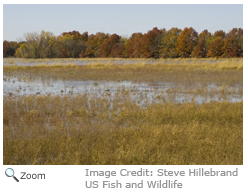 Everything
in the natural world is connected. An ecosystem is a community of living
and non-living things that work together. Ecosystems have no particular
size. Everything
in the natural world is connected. An ecosystem is a community of living
and non-living things that work together. Ecosystems have no particular
size.
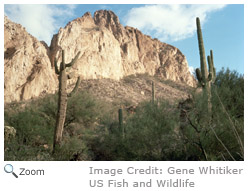 An ecosystem can be as large as a desert or a lake or as small
as a tree or a puddle. If you have a terrarium, that is an artificial
ecosystem. The water, water temperature, plants, animals, air, light and soil all work together. If there isn't enough light or water or if the soil doesn't have the right nutrients, the plants will die. If the plants die, animals that depend on them will die. If the animals that depend on the plants die, any animals that depend on those animals will die. Ecosystems in nature work the same way. All the parts work together to make a balanced system! An ecosystem can be as large as a desert or a lake or as small
as a tree or a puddle. If you have a terrarium, that is an artificial
ecosystem. The water, water temperature, plants, animals, air, light and soil all work together. If there isn't enough light or water or if the soil doesn't have the right nutrients, the plants will die. If the plants die, animals that depend on them will die. If the animals that depend on the plants die, any animals that depend on those animals will die. Ecosystems in nature work the same way. All the parts work together to make a balanced system!
The More the Merrier
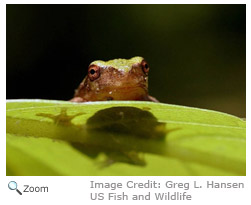 A healthy ecosystem has lots of species diversity and is less likely to be seriously damaged by human interaction, natural disasters and climate changes. Every species has a niche in its ecosystem that helps keep the system healthy. We are learning about new species every day, and we are just figuring out the roles they play in the natural world. By studying and maintaining biodiversity, we help keep our planet healthy. A healthy ecosystem has lots of species diversity and is less likely to be seriously damaged by human interaction, natural disasters and climate changes. Every species has a niche in its ecosystem that helps keep the system healthy. We are learning about new species every day, and we are just figuring out the roles they play in the natural world. By studying and maintaining biodiversity, we help keep our planet healthy.
Life in a Lake
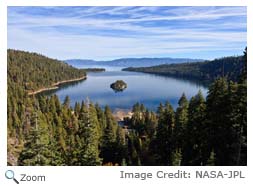 In
a lake ecosystem, the sun hits the water and helps the algae grow. Algae produces oxygen for animals like fish, and provides food for microscopic
animals. Small fish eat the microscopic animals, absorb oxygen with their
gills and expel carbon dioxide, which plants then use to grow. If the algae
disappeared, everything else would be impacted. Microscopic animals wouldn't
have enough food, fish wouldn't have enough oxygen and plants would lose
some of the carbon dioxide they need to grow. In
a lake ecosystem, the sun hits the water and helps the algae grow. Algae produces oxygen for animals like fish, and provides food for microscopic
animals. Small fish eat the microscopic animals, absorb oxygen with their
gills and expel carbon dioxide, which plants then use to grow. If the algae
disappeared, everything else would be impacted. Microscopic animals wouldn't
have enough food, fish wouldn't have enough oxygen and plants would lose
some of the carbon dioxide they need to grow.
Getting Along
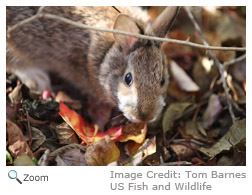 Ecosystems have lots of different living organisms that interact with each other. The living organisms in an ecosystem can be divided into three categories: producers, consumers and decomposers. They are all important parts of an ecosystem. Ecosystems have lots of different living organisms that interact with each other. The living organisms in an ecosystem can be divided into three categories: producers, consumers and decomposers. They are all important parts of an ecosystem.
Producers are the green plants. They make their own food. Consumers are animals and they get their energy from the producers or from organisms that eat producers.
There are three types of consumers: herbivores are animals that eat plants, carnivores are animals that eat herbivores and sometimes other carnivores and omnivores are animals that eat plants and other animals.
The third type of living organism in an ecosystem is the decomposers. Decomposers are plants and animals that break down dead plants and animals into organic materials that go back into the soil, which is where we started!
|
|
Parts
and Pieces
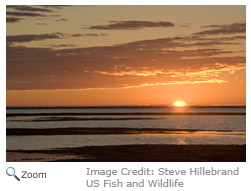 What are the major parts of an ecosystem? An ecosystem includes soil, atmosphere, heat and light from the sun, water and living organisms. What are the major parts of an ecosystem? An ecosystem includes soil, atmosphere, heat and light from the sun, water and living organisms.
Getting Down and Dirty
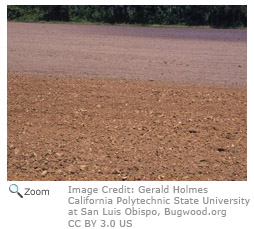 Soil is a critical part of an ecosystem. It provides important nutrients for the plants in an ecosystem. It helps anchor the plants to keep them in place. Soil absorbs and holds water for plants and animals to use and provides a home for lots of living organisms. Soil is a critical part of an ecosystem. It provides important nutrients for the plants in an ecosystem. It helps anchor the plants to keep them in place. Soil absorbs and holds water for plants and animals to use and provides a home for lots of living organisms.
Give Me a Little Air
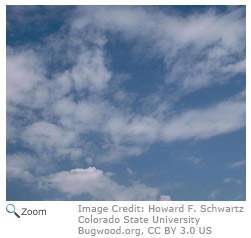 The atmosphere provides oxygen and carbon dioxide for the plants and animals in an ecosystem. The atmosphere is also part of the water cycle. Without the complex interactions and elements in the atmosphere, there would be no life at all! The atmosphere provides oxygen and carbon dioxide for the plants and animals in an ecosystem. The atmosphere is also part of the water cycle. Without the complex interactions and elements in the atmosphere, there would be no life at all!
Getting Some Sun
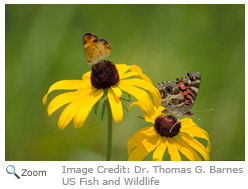 The heat and light from the sun are critical parts of an ecosystem. The sun's heat helps water evaporate and return to the atmosphere where it is cycled back into water. The heat also keeps plants and animals warm. Without light from the sun there would be no photosynthesis and plants wouldn't have the energy they need to make food. The heat and light from the sun are critical parts of an ecosystem. The sun's heat helps water evaporate and return to the atmosphere where it is cycled back into water. The heat also keeps plants and animals warm. Without light from the sun there would be no photosynthesis and plants wouldn't have the energy they need to make food.
Water Everywhere
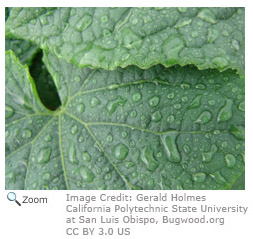 Without water there would be no life. Water is a large percentage of the cells that make up all living organisms. In fact, you may have heard that humans can go longer without food than they can without water. It's true! Without water all life would die. In addition to being an important part of cells, water is also used by plants to carry and distribute the nutrients they need to survive. Without water there would be no life. Water is a large percentage of the cells that make up all living organisms. In fact, you may have heard that humans can go longer without food than they can without water. It's true! Without water all life would die. In addition to being an important part of cells, water is also used by plants to carry and distribute the nutrients they need to survive.
|